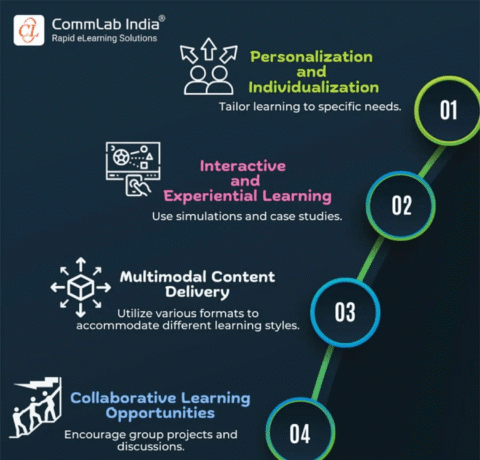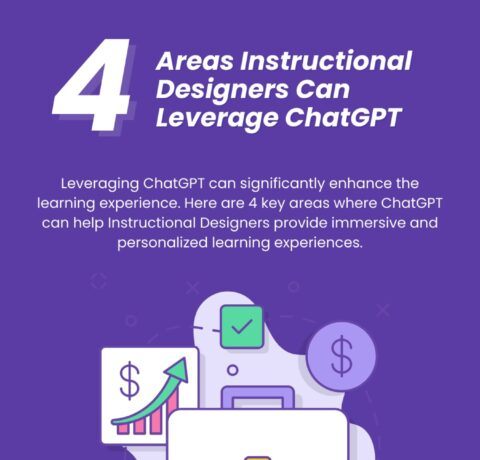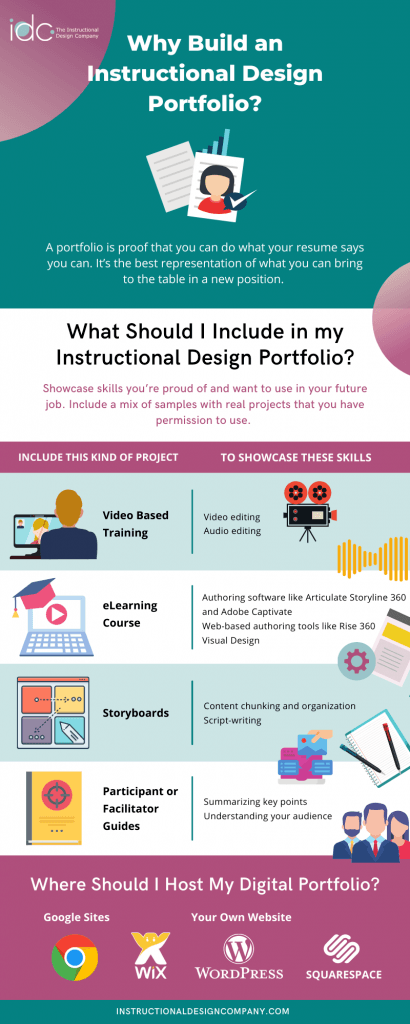How to Create a Portfolio to Land Your Dream Instructional Design Job—Infographic
Benefits of Creating a Digital Portfolio
Crafting a resume is time-consuming enough. Do you need to create a portfolio on top of that? The short answer is YES!
Here are some other amazing benefits to building a portfolio you can submit to complement your resume for an instructional design job:
- Provides evidence you can do what your resume says you can do
- Builds your credibility with recruiters and potential employers
- Gives you a leg up on your competition
- Tracks your accomplishments in personal and professional projects
- Attracts attention, especially if you don’t have formal instructional design experience
Getting Started on an Instructional Design Portfolio
I know this might seem like a lot of work, especially if you’re starting your portfolio from scratch. I’m not going to pretend like portfolio-building is easy- it’s not! It’s definitely not something you can do overnight.
So, we will break it down into seven manageable steps to get you started.
Step 1: Do Your Research
If you haven’t already, look up instructional design job postings. Take note of the popular requirements to get ideas for sample projects to create for your portfolio.
Step 2: Pick a Topic
Since you have to create a project from scratch, it might as well be on a topic you enjoy or know a lot about! It can be really simple. The simpler, the better. You want your audience to focus on the delivery, not necessarily the exact content.
If you’re having trouble thinking of a topic, check out this website that generates project ideas.
Step 3: Plan the Deliverable
Here’s where you decide how you’re going to present your topic. Those job requirements you researched earlier will come into play here. For example, if you want to showcase your development skills, you might plan an eLearning course using authoring software. If you want to showcase video and audio editing skills, you’ll create a video tutorial.
Step 4: Organize your Content
Regardless of your final product’s format, you’ve got to get organized before jumping into the product. Especially if you’re going to be relying on a free trial to finish your project!
Identify learning objectives and organize your content. You can even storyboard the project and track it using a project management tool (news flash: those can also be portfolio assets!)
Step 5: Develop the Project
Once you’re organized, you’re ready to develop. Now you can start your free trial if you need to. Even though this is just a sample project, don’t forget to run it through quality assurance. Send it to someone you trust to get their feedback before you add it to your portfolio.
Step 6: Host your Portfolio
Once you have something to include in your portfolio, you need a place to put it. There are plenty of great options (many of them are free) for hosting your instructional design portfolio.
Here are a few of our favorites:
Step 7: Post your Portfolio
You might choose to wait on this step until you have more than one project, but the last step is to share your portfolio with the world! Or with your professional network, at least.







You can adjust your cookie preferences here.